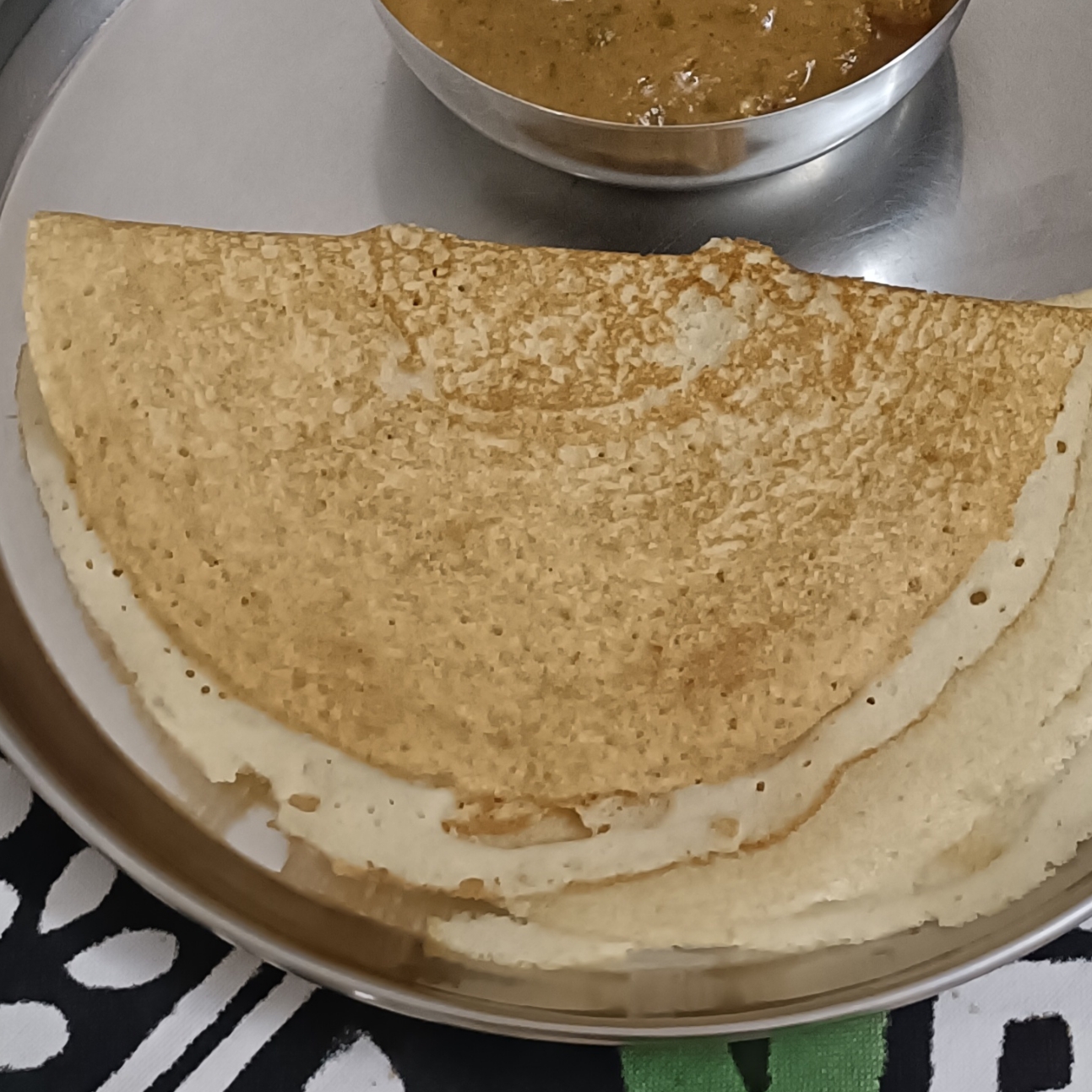Recipe credit: Darshana Muzumdar
Serves 4 people as a part of an Indian meal.
Ingredients
- 2 cups rice (a less starchy variety like sonamasuri works well)
- 1 cup urad dal (black gram dal)
- ½ tbsp mustard seeds
- 1½ tsps rock salt or to taste
- Groundnut oil to fry
Method
- Wash and soak the dal in 2 cups of water, the rice plus the mustard seeds in enough water to cover it completely for two to three hours. Note: the mustard seeds give the dosa a delicate fragrance and added taste.
- Grind the dal first using as little water as possible till it is very fine and frothy. Empty it into a large pot or bowl.
- Grind the rice separately again using as little of the soaking liquid as possible until it is really fine. Add this to the ground urad dal.
- Add salt and mix it all well. Add a little more of the soaking liquid if necessary to make the batter of a semi-liquid consistency.
- Keep covered for three to four hours to allow it to ferment and rise slightly. If kept longer, it will ferment more, (see image below).
- NOTE: you can keep this batter in the fridge for a couple of days.
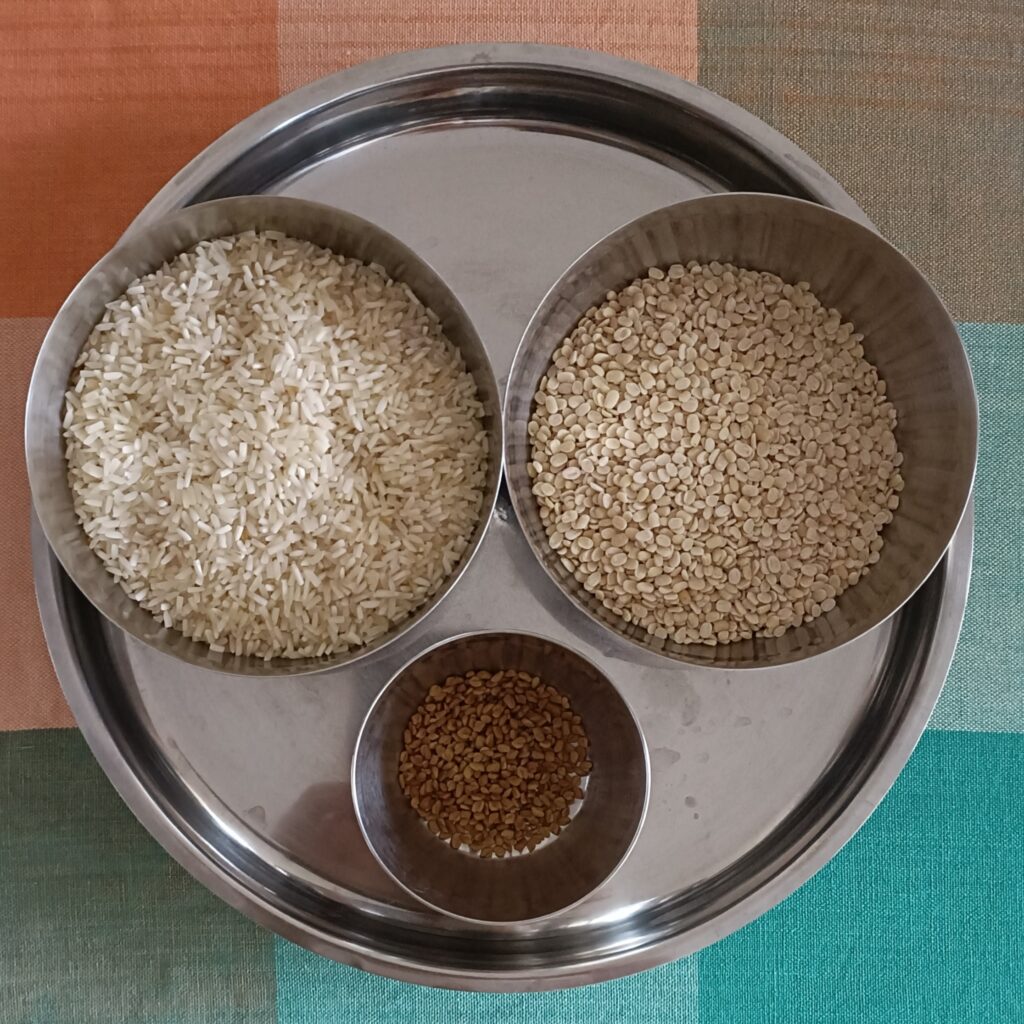
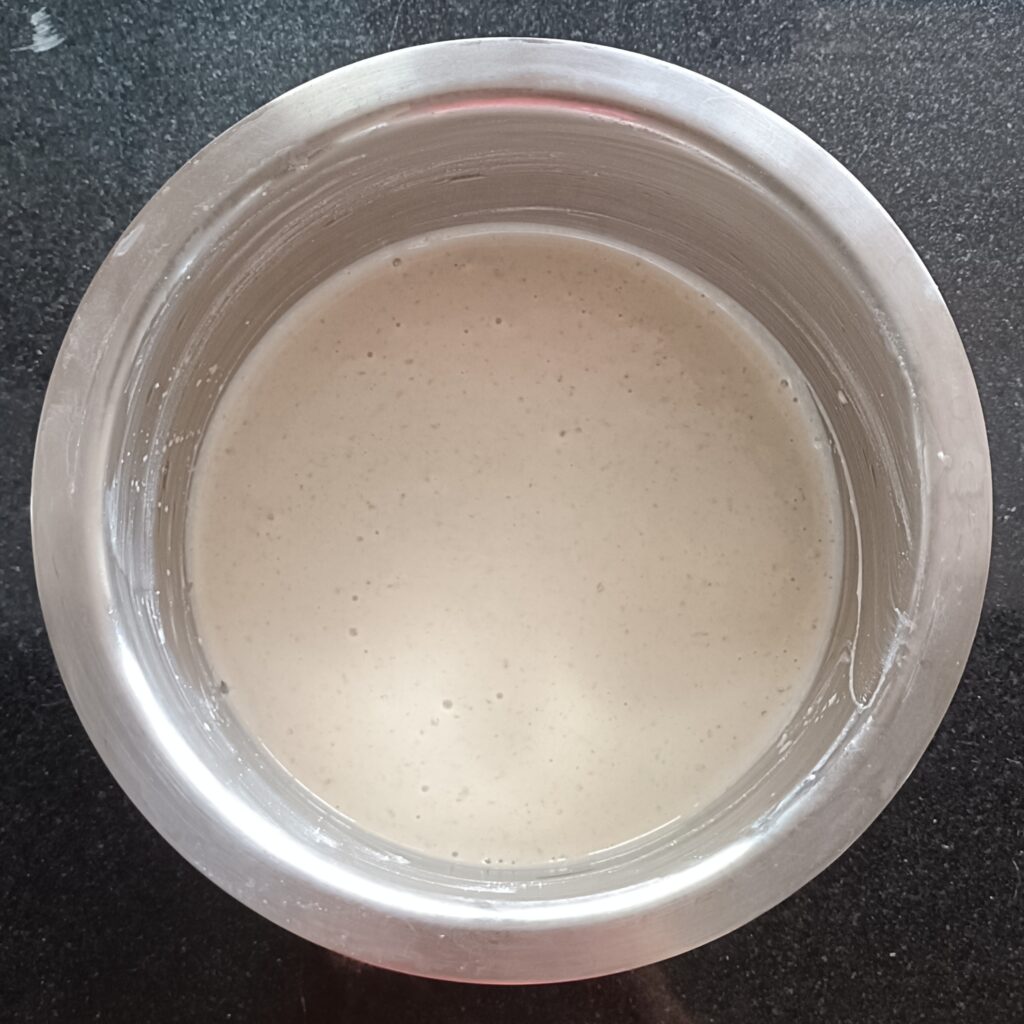
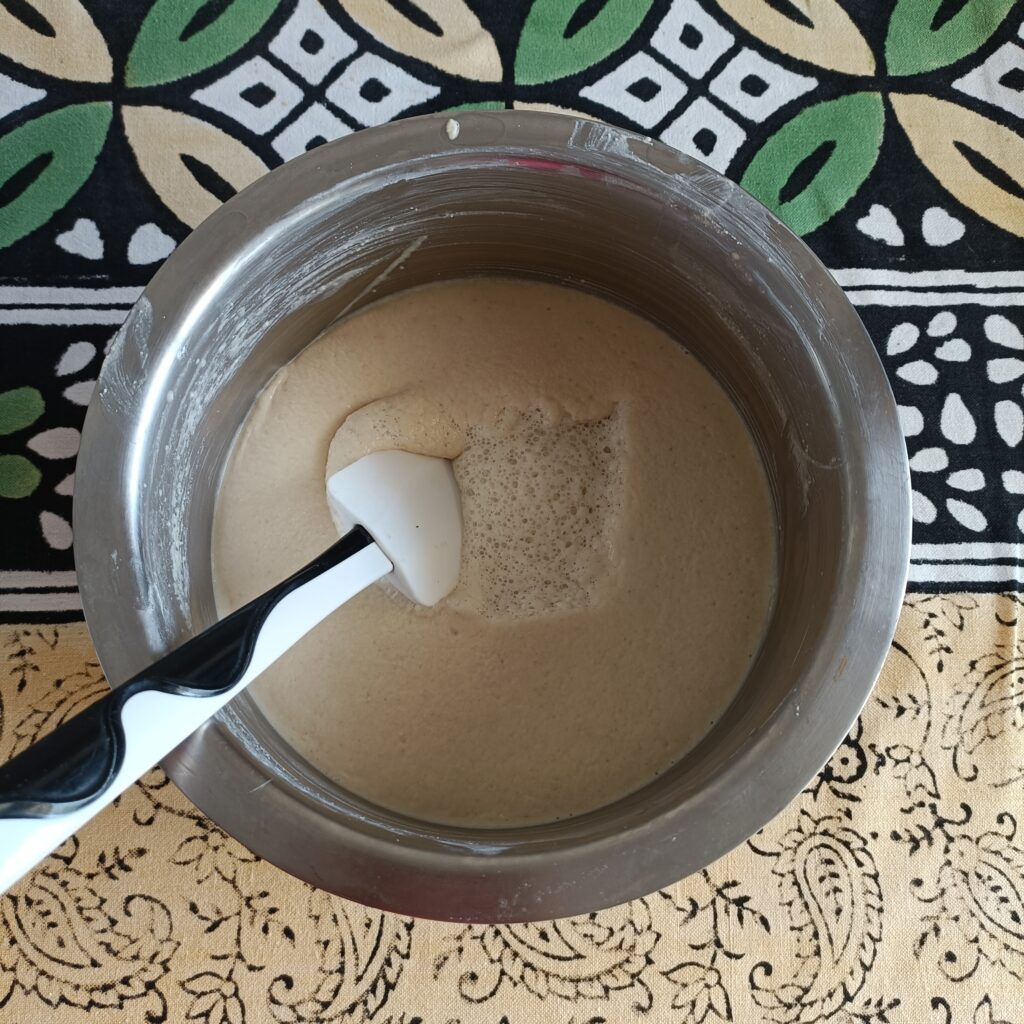
- Heat a flat frying pan on medium heat and then turn down the heat to low. Spread half a teaspoon of oil evenly all over the surface of the pan.
- Beat the batter well and then spread a ladleful (a little less than half a cup) of it starting from the middle of the pan moving around in a circular manner to make a thin circle.
- Cover with a lid and let it cook for about two minutes.
- Check to see if it is lightly brown and comes off from the sides easily.
- Flip and cook the other side till it is slightly brown too.
- Serve with a fresh coconut chutney or a dry chana dal chutney. Check for the recipes in the chutneys section. You can also serve these dosas with any vegetable curry of your choice.
For the Whole-Food Plant-Based (WFPB) version:
Use brown rice and urad dal with the skin on. Add 1/2 fresh coconut (grated) while grinding to avoid using oil for frying.
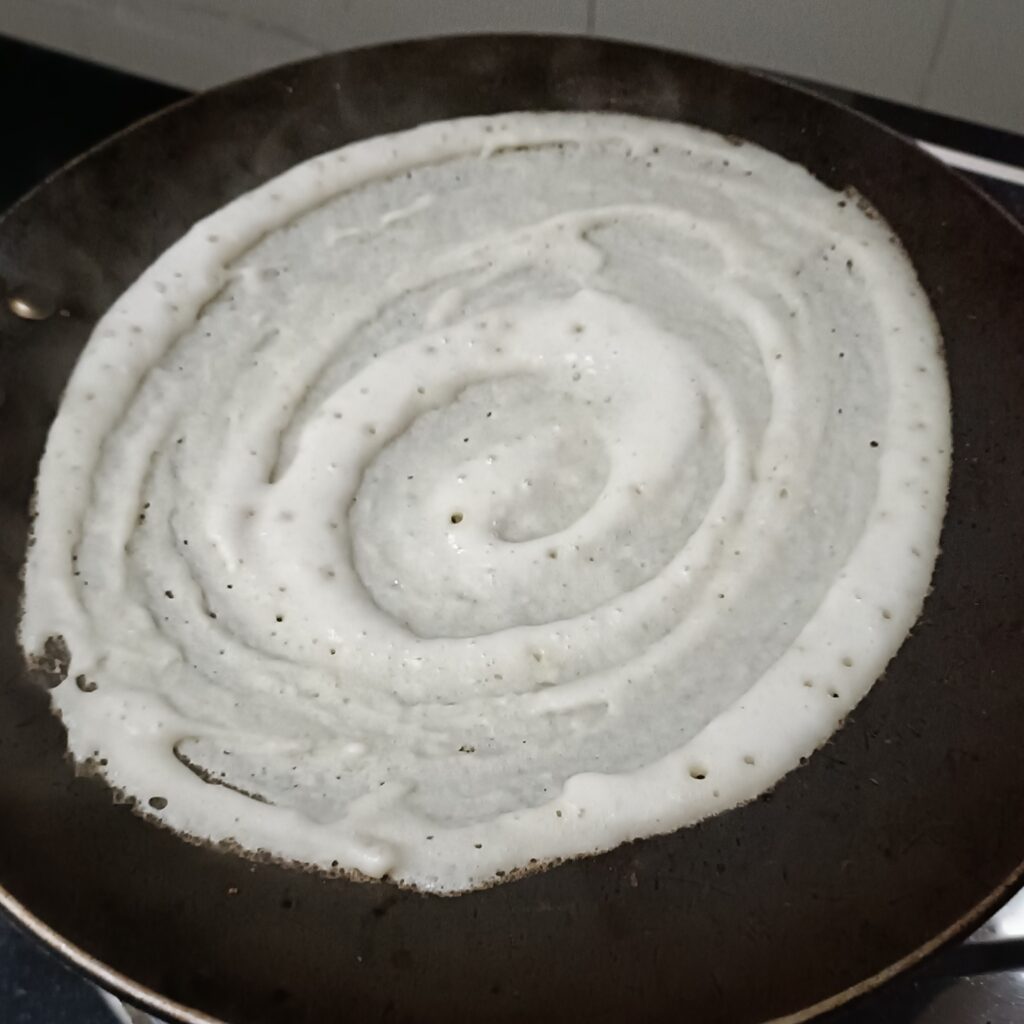
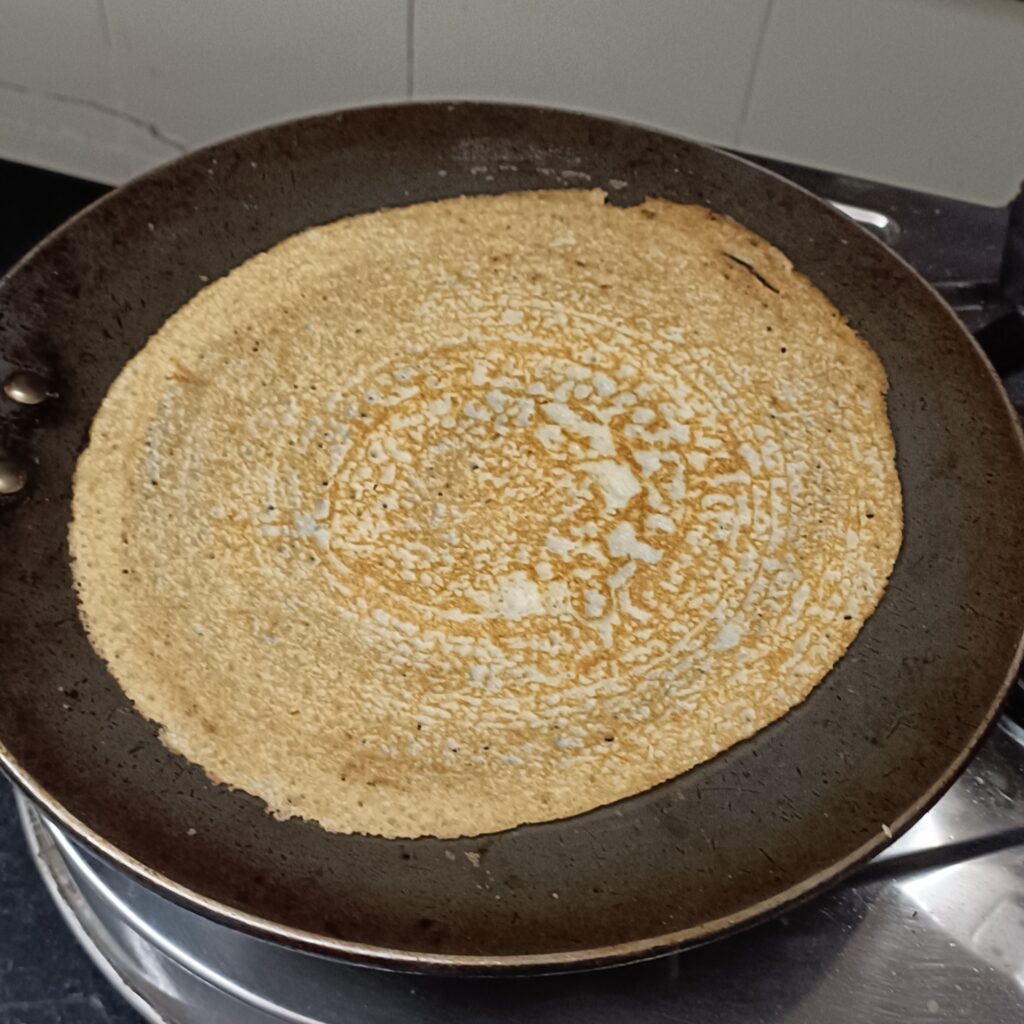
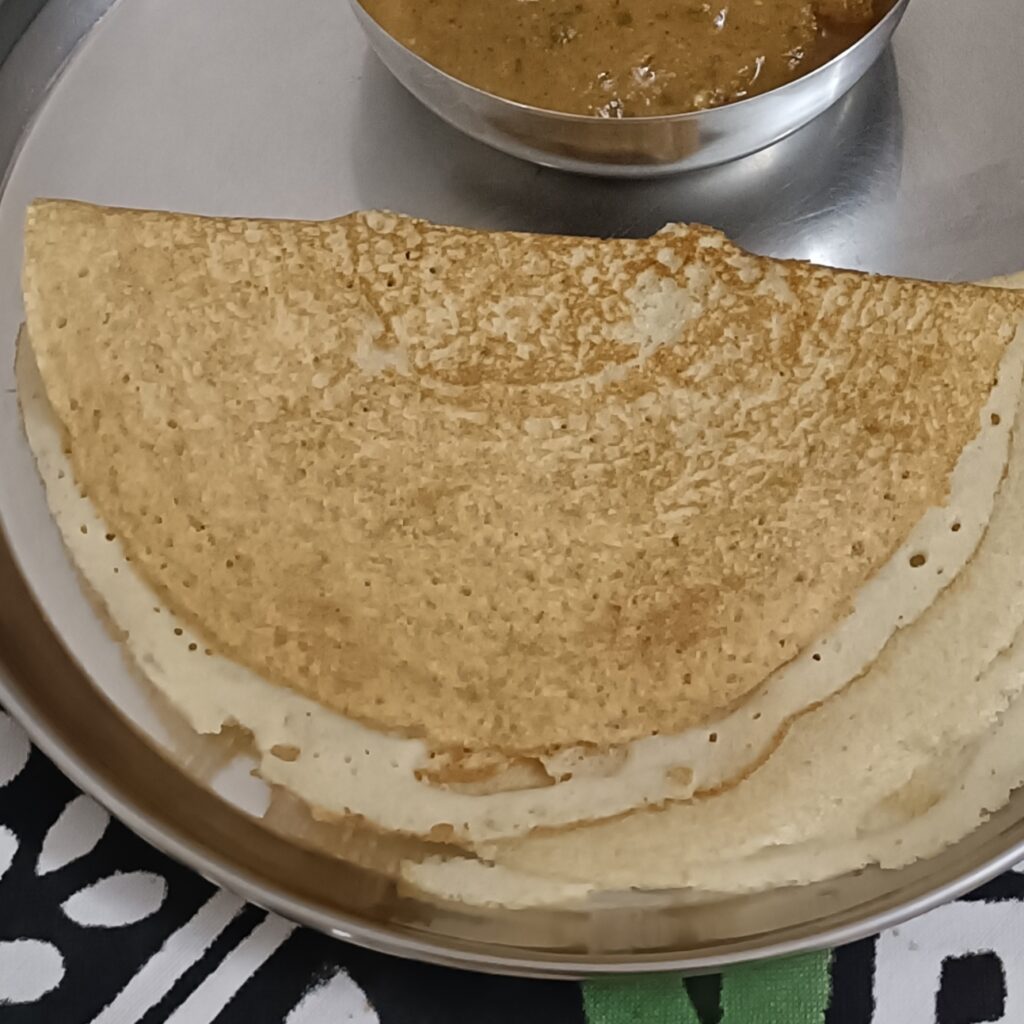
Share this:
- Click to share on Facebook (Opens in new window)
- Click to share on WhatsApp (Opens in new window)
- Click to share on Twitter (Opens in new window)
- Click to share on Pinterest (Opens in new window)
- Click to share on LinkedIn (Opens in new window)
- Click to share on Reddit (Opens in new window)
- Click to share on Tumblr (Opens in new window)
- Click to share on Pocket (Opens in new window)
- Click to share on Telegram (Opens in new window)
- Click to print (Opens in new window)

